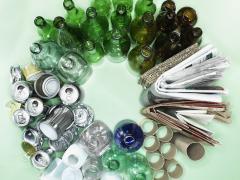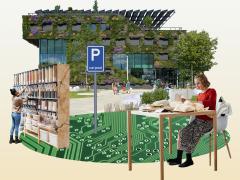Environmental impacts of extraction and processing of raw materials for the energy transition
Both the European Critical Raw Materials Act and the Dutch Raw Materials Strategy promote mitigation of negative environmental impacts associated with the production of strategic and critical raw materials. The goal of this report is to enhance our understanding of these impacts and provide a knowledge base for the continued refinement of these strategies. The scope of the research is narrowed down to extraction and processing of metals for the energy transition.
Some key insights
The energy transition is expected to lead to a net reduction in the primary resources required for energy generation over the medium to long term. This is primarily attributed to a significant decrease in coal mining and an enhanced recycling of materials. Nonetheless, it is anticipated that mining activities for most metals will experience a strong increase.
Globally, it is estimated that mines cover around 100,000 km2 of land area, while almost 1 million km2 of land is overlaid with mining-related waste (this is more than the global urbanised area). Mining operations are increasingly encroaching upon areas rich in biodiversity: around one third of forests worldwide is (in)directly affected by mining. Also, a large part of water intensive mining activities takes place in regions that are already under water stress, such as Sub-Saharan Africa and the Andes region in South America.
The environmental footprint of metals significantly varies depending on multiple factors, such as the type of metal ore and the method used to process it. For example, metals that come from oxide ores, such as aluminium and lithium, typically need large quantities of chemicals for their extraction. On the other hand, metals derived from sulfide ores, like copper and nickel, require a lot of energy, often in the form of heat.
Another key factor affecting the environmental footprint is the ore grade, which refers to the amount of metal concentrated in the ore. Some minerals, such as rare earth elements (REEs), naturally occur in low concentrations, while the ore grades for other minerals are decreasing over time. This decrease means that more energy and water is needed, and more waste is generated to extract the same amount of metal in the future. Metal production already is a significant source of global greenhouse gas emissions, currently responsible for around 10% of total energy-related emissions.
To date, existing environmental standards have only been adopted to a limited degree by the extraction industry and fall short in addressing indirect and cumulative environmental impacts.
Scope of the report
This publication provides an overview of recent scientific research on the implications of mining and processing of metals for land-use, water scarcity and pollution, soil erosion and contamination, biodiversity loss, and climate change. In addition, the report highlights the importance of mining methods, land rehabilitation, and waste management as drivers of environmental impacts. Lastly, it also discusses certain research gaps.
The following metals are assessed: iron (steel), bauxite (aluminium), copper, silicon, graphite, zinc, nickel, chromium, manganese, lithium, cobalt, molybdenum and rare earth elements (REEs). The report looks beyond the EU’s critical raw materials list, and includes chromium, molybdenum, zinc, and steel, since these are important for the energy transition and are causing significant environmental impacts. However, the insights gained from this research can be used in sustainable policy developments for all abiotic raw materials.
Authors
Specifications
- Publication title
- Environmental impacts of extraction and processing of raw materials for the energy transition
- Publication date
- 8 February 2024
- Publication type
- Report
- Page count
- 40
- Publication language
- English
- Product number
- 5364




